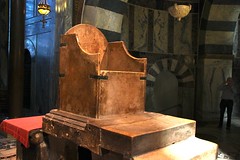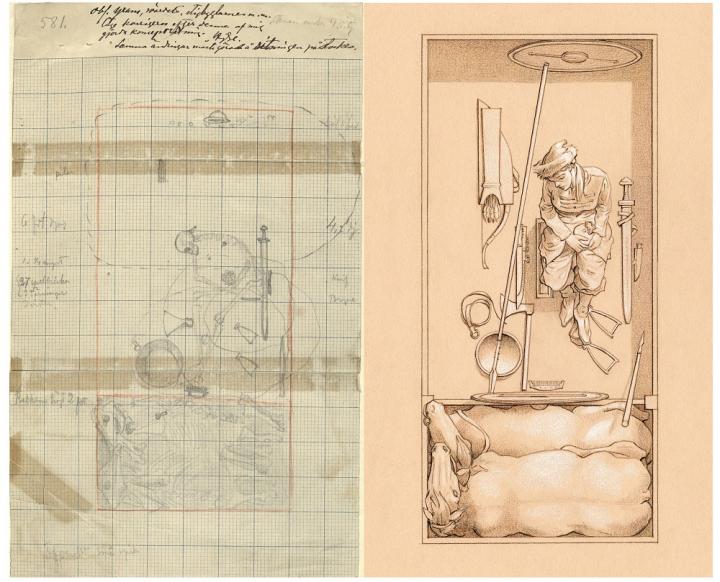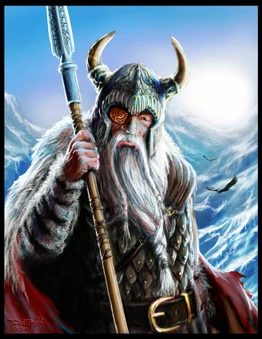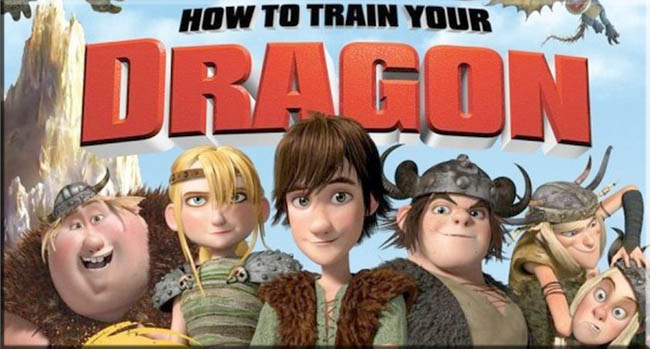This image of German Emperor Otto III helps to illustrate the growth of the cultural influence of the Byzantine Empire in Germany. In 972 Theophano and Otto II married and with that marriage a significant amount of cultural influence was brought to the North and West of the Byzantine Empire's borders into Germany. During Theophano's time as the wife of Otto II and her time as regent for her son Otto III she contributed large sums of money to churches and monasteries in her husband's and son's domains. She even sent her daughters to live in nunneries in Maastricht and Quedlinburg. Many of the churches she helped to found were dedicated to saints from her homeland.
The image itself shows many aspects of Byzantine influence. The clothing that the Emperor Otto III wears is the long robes common in Byzantium and not the trousers more commonly worn by Northern Europeans at that time. The style of the image has Byzantine influences in the how the image has a one dimensionality look to the figures within it though it also layers them to create a more two dimensional looking image. The image of the Emperor sitting on his throne and or surrounded by people paying homage to him is common in Byzantine art and is found in other images. Examples of this include mosaic panels of Justinian and his wife Theodora being surrounded by priests, soldiers, and their attendants in the Church of San Vitale in Ravenna and another mosaic in the Hagia Sofia that shows the Byzantine Empress Zoe and her husband Constantine IX paying homage to Jesus in a similar way that a ruler would be depicted.
Sources
Bennett, Judith. Medieval Europe: A Short History. McGraw-Hill, 2011.
Browning, Robert. The Byzantine Empire. The Catholic University of America Press, 1992.
Herrin, Judith. Byzantium: The Surprising Life of a Medieval Empire. Princeton University Press, 2009.
Obolensky, Dimitri. The Byzantine Commonwealth: Eastern Europe, 500-1453. Praeger Publishers, 1971.
Historical artifacts from the Middle Ages. Vivid, colorful, and illuminating the past. Here we analyze objects, artifacts, monuments, relics, and material culture as a response to the numerous myths that circulate 'fake news' about the Middle Ages--from their belief in the flat earth (fake!) to the female lock-n-key chastity belts (fake!). In addition, this site will highlight medieval films in all their attempted history (for better or worse). Let's get medieval.
Charlemagne's Relics

Charlemagne was a very holy man that built churches and collected relics throughout this life. This promoted a Christian atmosphere in his kingdom. The most famous Church that he built was the Aachen Church. Aachen is actually a large complex that had a chapel on it which is now referred to as Palatine Chapel. The four main relics that Charlemagne collected now reside in this chapel in the Shrine for the Virgin Mary (pictured right).
The relics that Charlemagne collected attracted pilgrims from all over Europe to visit to indulge in the history of the Catholic Church. The four main relics that are on display today are the swaddling blanket of baby Jesus, the dress of the Virgin Mary, the cloth placed on John the Baptist after he was beheaded, and the cloth worn by Jesus on the Cross. It had become tradition to only show these relics every seven year and this tradition has been continued into the present day. The last time that the relics were shown was 2014 and the nest time they will be shown is in 2021.
 The relics are located in a glass box behind the altar of the chapel. They are right next to the Shrine of Charlemagne which houses his remains. He was first buried in the chapel in 814 after his death but his remains were eventually but into a shrine that is present in the chapel today.
The relics are located in a glass box behind the altar of the chapel. They are right next to the Shrine of Charlemagne which houses his remains. He was first buried in the chapel in 814 after his death but his remains were eventually but into a shrine that is present in the chapel today.
Another item that had been preserved from the time of Charlemagne in the Palatine Chapel is Barbarossa's chandelier (pictured left), which was a chandelier that was put in the chapel in 1165 to celebrate Charlemagne's canonization.
Charlemagne collected relics during his lifetime but there was also relics that were put into Aachen that happened after his lifetime. These relics are centered around Christianity and the strong dedication that Charlemagne had to it.
 |
| Charlemagne presenting his relics at the Palatine Chapel |
References
“Aachen Cathedral.” Aachen Cathedral - New World Encyclopedia, New World Encyclopedia, www.newworldencyclopedia.org/entry/Aachen_Cathedral. Accessed 15 Sept. 2017.
Hamdan, Ahmad. “Middle Ages.” Pinterest, 11 Sept. 2015, www.pinterest.com/pin/537265430525322310. Accesses 15 Sept. 2017.
“Sacred Destinations.” Aachen Cathedral - Aachen, Germany, Sacred Destinations, www.sacred-destinations.com/germany/aachen-cathedral. Accessed 15 Sept. 2017.
Bennett, Judith M., and C. Warren Hollister. Medieval Europe: A Short History. Boston: McGraw-Hill, 2006. Print. 88-93.
The Aachen Cathedral
Charlemagne
in Aachen as you might have already guessed. It was designed after cathedrals
in Constantinople and Ravenna to the point that it actually used columns taken
from one in Ravenna. The mimicry might have just been because it’s a good way
to build a cathedral it also might have been Charlemagne trying to tie himself
to Constantine and other Roman emperors to cement his authority as an emperor.
In my opinion of the ways you can demonstrate authority building a giant
beautiful church that endures for more than a thousand years is a pretty good
one. The Cathedral ended up outliving Charlemagne and his empire after his son
died his grandchildren divided it up into three kingdoms. The middle of the
three kingdoms became the Holy Roman Empire which used Charlemagne's throne in
the Cathedral to coronate their kings. Charlemagne actually wasn’t
 .
. The Cathedral was added onto throughout the Middle Ages a gothic choir and a series of other chapels were added but the original is still recognizable because of it's more distinctive style. There used to be a mosaic of Christ Enthroned with the Elders of the Apocalypse around him the current mosaic was put up in 1880. The Cathedral Treasury is one of the most important ones in Europe it contains the Cross of Lothar from about the 1000s AD a reliquary bust of Charlemagne and a marble sarcophagus that used to contain his body.
References
Centre, U. W. (n.d.). Aachen Cathedral. Retrieved September 15, 2017, from http://whc.unesco.org/en/list/3
Bekker, H. (2017, March 10). See the Throne of Charlemagne (Karlsthron) in Aachen Cathedral. Retrieved September 15, 2017, from https://www.european-traveler.com/germany/see-throne-shrine-charlemagne-aachen-cathedral/
E.V., D. Z. (2017, September 04). Retrieved September 15, 2017, from http://www.germany.travel/en/towns-cities-culture/unesco-world-heritage/gallery-aachen-cathedral.html
The Discourse Surrounding Bj 581: The Woman Warrior
 |
Reconstruction of the 19th century sketch of Bj 581
A previously assumed male Viking warrior with a burial mound reflecting that of a high ranking military officer has, as explained in this paper, been proven with the use of genomics to be genetically female. This investigation came after an osteological analysis challenged the gender of the remains, and from it came a renewed discourse surrounding gender politics in Viking society. An interesting aspect of this discourse is how modern biases might be affecting analysis of this finding.
Judith Jesch, professor of Viking studies at the University of Nottingham, argues "I have always thought (and to some extent still do) that the fascination with women warriors, both in popular culture and in academic discourse, is heavily, probably too heavily, influenced by 20th- and 21st-century desires." Though this may be a case of a single woman military officer, it does not necessarily mean that the strict gender roles of Viking society as proposed by older historic analysis were false.
On the other side, this article from the Guardian argues that Viking women warriors were "written out of history". Bj 581 was assumed to be male "because archaeologists, acculturated in a western society with strictly defined gender roles, view men alone as warriors, or soldiers, or wielders of violence."
In both cases a narrative is being constructed from the past: the discourse is either influenced by a popular fascination reflective of the modern perspective, or the modern perspective is based on "assumptions about human behaviors that renders our attempt to understand those behaviors somewhat moot." Which of these two angles hold the most credence, or is there a middle ground here that is being left unaddressed?
References
Hedenstierna-Jonson C, Kjellström A, Zachrisson T, et al. A female Viking warrior confirmed by genomics. Am J Phys Anthropol. 2017;00:1-8. https://doi.org/10.1002/ajpa.23308.
Jesch, J."Lets Debate Female Viking Warriors Yet Again." Norse and Viking Ramblings. http://norseandviking.blogspot.co.uk/2017/09/lets-debate-female-viking-warriors-yet.html. Accessed 15 Sept. 2017
Norton, H. "How the female Viking warrior was written out of history." The Guardian. https://www.theguardian.com/science/2017/sep/15/how-the-female-viking-warrior-was-written-out-of-history. Accessed 15 Sept. 2017
|
How To Train Your Dragon
How To Train Your Dragon is an animated movie that gives notable reference to a time period largely misrepresented in popular culture as well as the cinematic fantasy world. The Viking era is a time period that most people think of when they see horned helmets or spears with leather wrappings. Most people place images of dragons in the Viking era as well or perhaps even ships that actually do resemble a type of ship that was used in the Viking era like the Oseberg Ship represented below. With that said however, most people have no idea what that time frame actually looked like and thus their imaginative world is populated with images of Odin and large brutish people that spoke in rough English (maybe with a Scottish accent?), drank too much, and killed things. How To Train Your Dragon portrays that image beautifully.
The movie though entertaining, bases very little in actual historical fact and plays more to the common perception (misconception) of the time period that all are more comfortable with and hold high expectation to see. Examples of this are found throughout the movie from their helmets (Viking helmets actually didn't have horns), their accents (Vikings weren't Scottish...), their daily activities (Viking were more concerned with the growth of their rule and wealth), etc. If you place the images of How To Train Your Dragon next to anything else in history, you'll find more connections with the Norse gods than you will with any other physical reality (an image of Odin and his ravens is provided for your reference below). The weaponry, clothing, housing, hobbies and personalities seem to come from Norse god folk tale than they do from actual historicity.
 With this critique in mind, the movie never claims to be historical non-fiction and thus takes liberties with elements of the movie (the most outrageous has to be their accents... I mean come on...). The movie is quite entertaining and supplies a beautiful movie but a terrible history book so watch it to feel the human emotion within and not to study for an exam!
With this critique in mind, the movie never claims to be historical non-fiction and thus takes liberties with elements of the movie (the most outrageous has to be their accents... I mean come on...). The movie is quite entertaining and supplies a beautiful movie but a terrible history book so watch it to feel the human emotion within and not to study for an exam!
References
How to Train Your Dragon. Dir. Dean
DeBlois and Chris Sanders. Perf. Jay Baruchel, Gerard Butler, Craig
Ferguson, America Ferrera, Jonah Hill, T.J. Miller, Kristen Wiig, and
Christopher Mintz-Plasse. Dreamworld, 2010.
How To Train Your Dragon. Digital image. N.p., n.d. Web. 13 Sept. 2017.
Oseberg Ship. Digital image. Feminae. N.p., n.d. Web. 13 Sept. 2017.
Odin. Digital image. Fandom. N.p., n.d. Web. 13 Sept. 2017.
Subscribe to:
Comments (Atom)
Medieval University

Italy, 1400

900s, Jewelled crown



